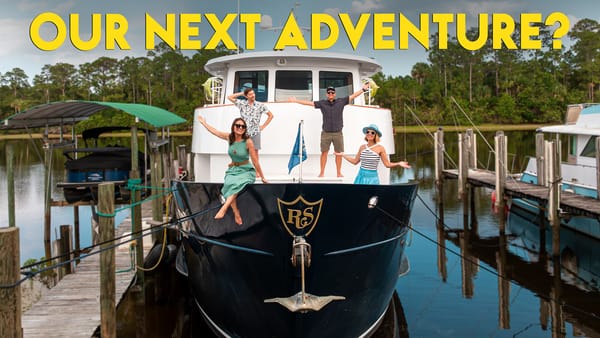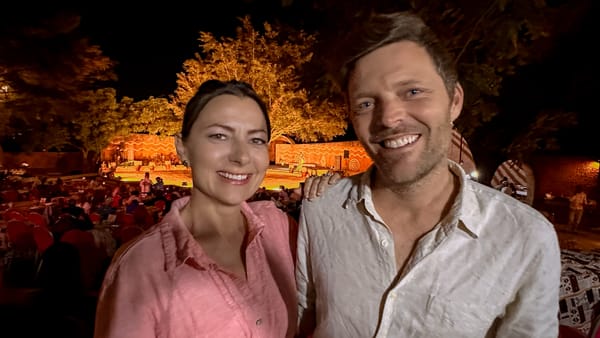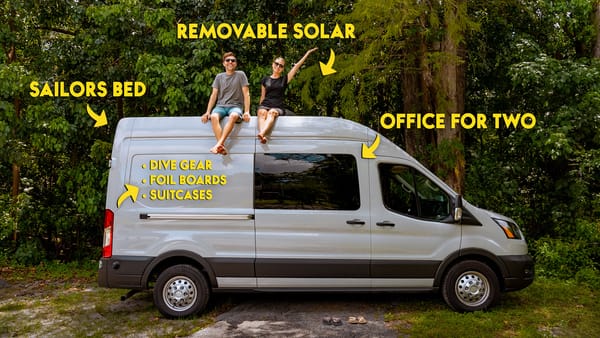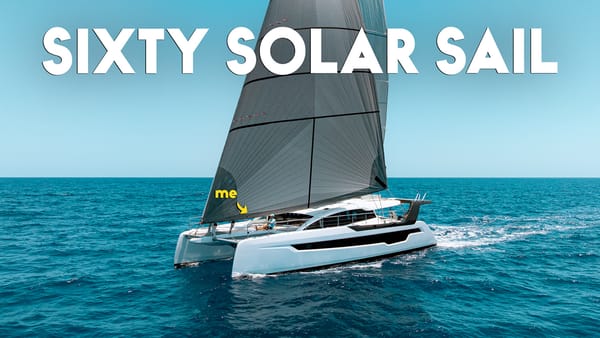Boat Life: How We Make Ultra Pure Water
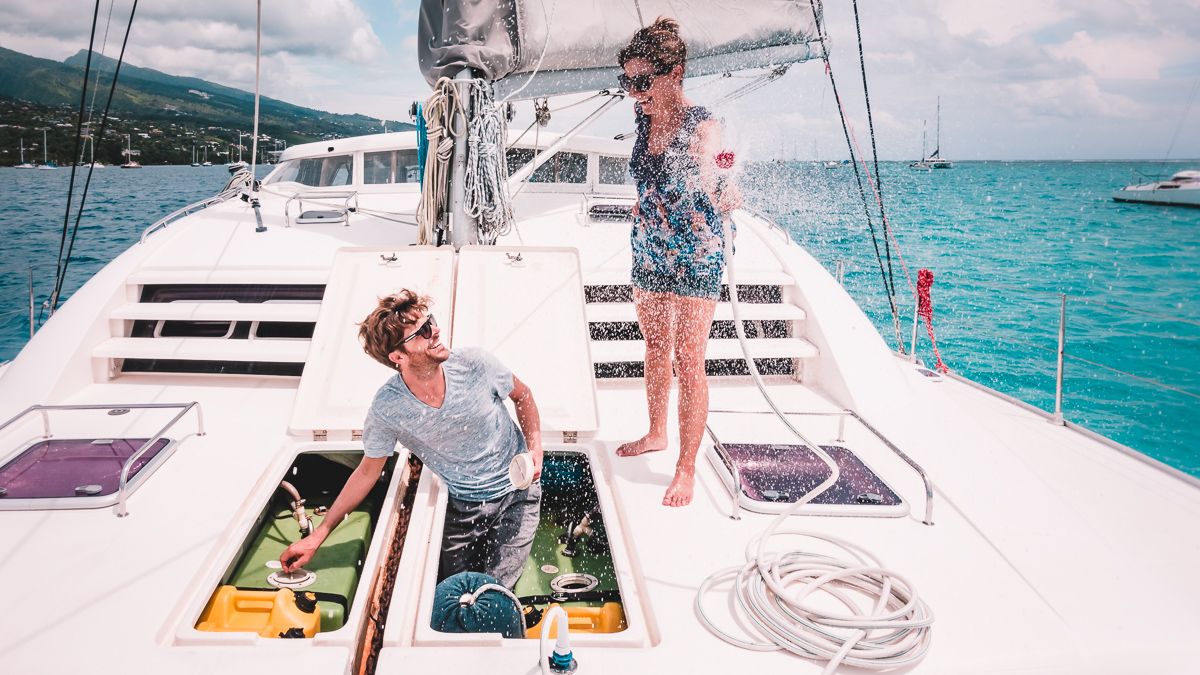
Water is our most important resource…we literally can’t survive without it.
The average human should consume 2 liters of water per day. When in the tropics, we probably sweat at least 4 liters a day, so we consume more!
After over a decade of living off the grid, we like to think we have the water situation down pat. Not only can we stretch a gallon of water like a desert rat…we’ve never had to buy bottled water for our traveling home. Here is everything we use to make, filter and purify our water.
Last time we talked about how we get water on our sailboat: rain collection, public sources and our best friend Mr. Watermaker. If you haven’t seen it yet, go check it out.
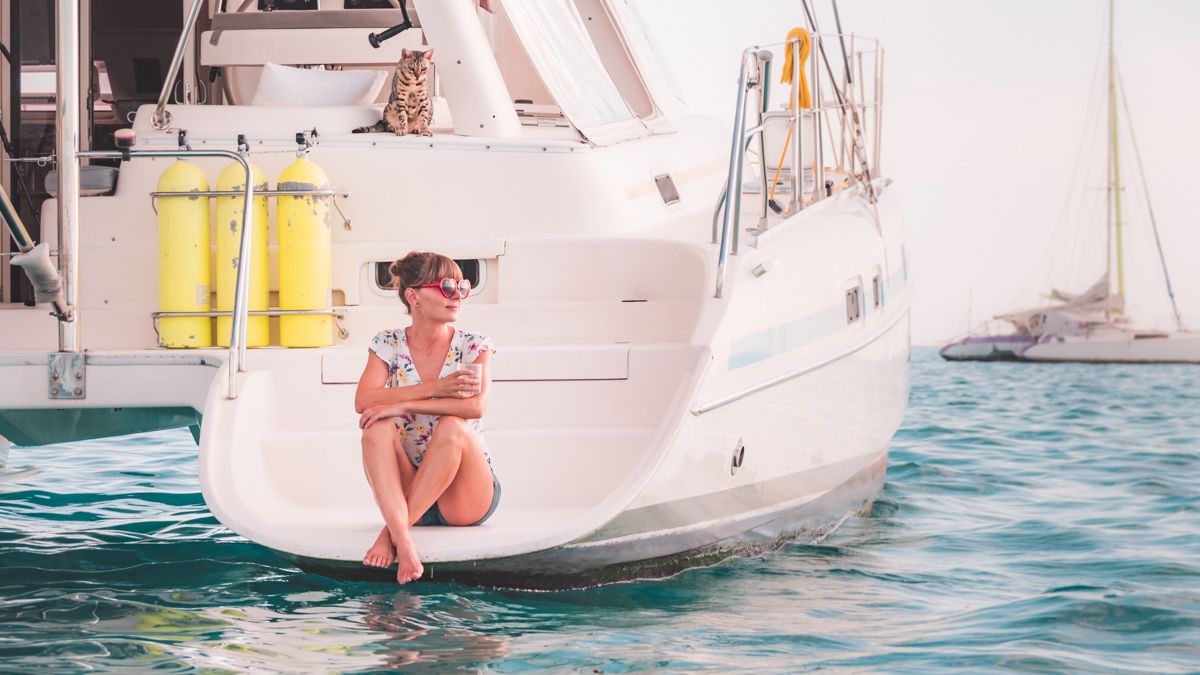
Water Storage & Why It’s Sketchy
Every boat, RV, tiny home or whatever form of traveling off the grid home, will be a little different but in general, we all have some sort of storage tank and a method to get it out of the tank. Either by gravity flow, foot pump or electric pump.
While our watermaker is our main source of water and the quality is unbeatable, there are instances where we need to source it elsewhere. Maybe the watermaker is on the fritz or we're anchored somewhere water quality is so dirty or silty, it would clog up our watermaker filters.
No matter where we source our water from, it’s always stored in our potentially sketchy (petri dish in waiting) water tanks. Even if the water going in is super squeaky clean (like from our RO)…water tanks get grubby! Here’s why:
- Our tanks are not perfectly sealed and are subject to whatever bacteria/creatures are in the air or can squeeze through any gaps or seals.
- It gets hot and bacteria love warm environments.
- Tanks get exposed to air and outside contaminants each time we open them for inspection or to fill them up.
- Sometimes we fill our tanks with public water (each has its own set of bacteria and unknown quality).
- Our water tanks are hard to clean and sanitize (most are).
Drinking sketchy water can mean consequences far worse than a dose of Montezuma’s Revenge. Which brings us to the importance of water filtration and purification.
Water Filtration
Carbon (and Brita-type) filters don’t purify water, they filter it. They help with odor, taste and remove chemicals (like chlorine) and hard metals (like lead), and sediment. Which is great! But, any biological creatures such as giardia or e. coli pass right through. So, you still have those pesky illness-causing microorganisms to worry about.
Purification is the only way to guarantee safe drinking water but…filters have their place too. Filters help with particles and taste, which is why we use carbon filters for the “whole house” and all the benefits they provide.
Whole House Filter: https://amzn.to/2EkZCHH
- Filters and reduces sediment, dirt, sand, silt, rust, scale particles, Chlorine taste & odor, VOC’s
Inline Filter For Water hose: https://amzn.to/2Emns5W
Purifying water
There are a few different ways to go about purifying water, like boiling it or chemically treat it. But, the EWG.org states, “Drinking water disinfection is essential and saves lives from microbial diseases. But when chlorine and other disinfectants react with plant and animal waste in the water, harmful disinfection byproducts are formed.”
So for sanity and time sake, we’ll stick to our fave method aboard curiosity.
LED-UV
Ultraviolet water purification is the most effective method for disinfecting bacteria from the water (aside from RO). UV rays penetrate harmful pathogens in the water and annihilate illness-causing microorganisms by attacking their DNA. 99.9% of bacteria, viruses and other pathogens…dead!
We’ve had a variety of UV water purifiers over the years. We have a UV light for backpack travel/hiking. In the RV we had a tabletop distiller and UV light. We even had a UV/Carbon setup back in our sedentary days in Dallas (because city water tastes funky and can be sketchy too).
In other words, we’re big fans of UV purification!
We had an Acuva on CURIOSITY 1 and we have one now aboard CURIOSITY 2. It is a compact, marine-grade system that is easy to install and has virtually no maintenance. It also helps with improving taste and odor.
Acuva has offered 10% OFF any system, just use the Promo Code WYNNS at checkout: https://bit.ly/WYNNS-UVWater
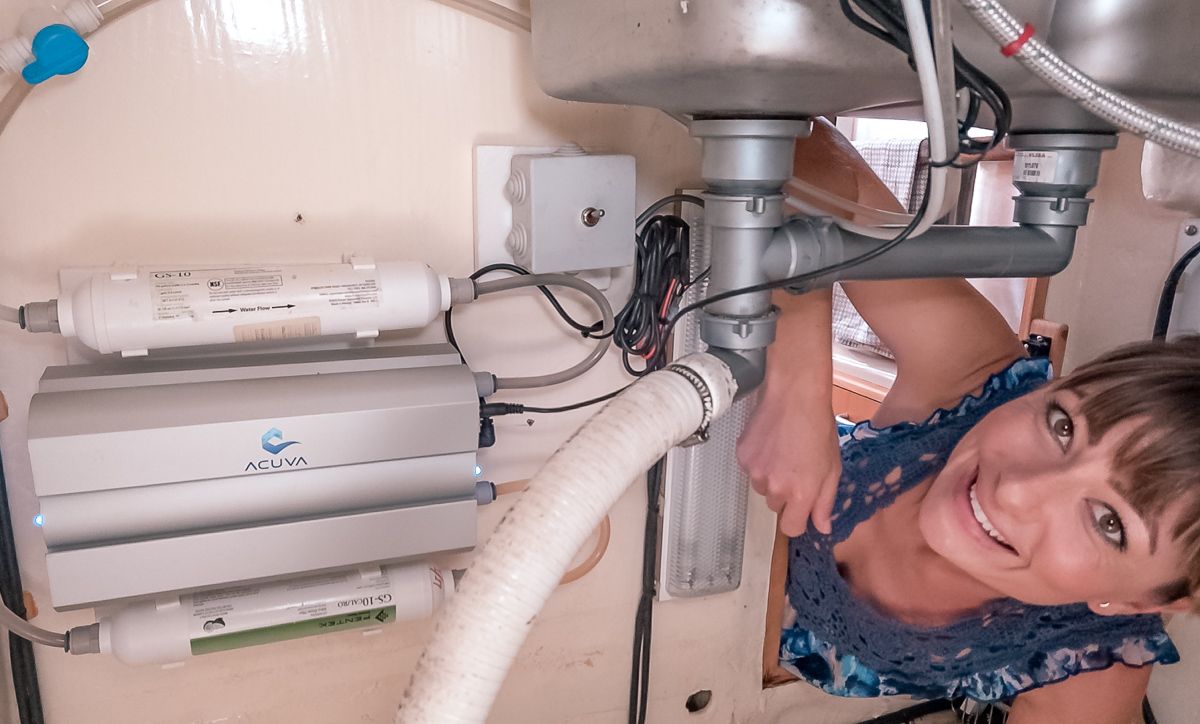
Show Me The Money – The Most Affordable Option
Remember when we said the average human should consume 2 liters of water per day? Well, that is just the bare minimum. While we were sailing Tahiti, a 5 liter jug was 330 CFP.
- 2 liters a day per person x 365 days in a year = 730 liters
- That means we would need 146 of those 5 liter jugs.
- 146 5-liter jugs x 330 CFP Franc = 48,180
- 1 CFP Franc = 0.0095 USD
- 48,180 CFP = $457.72 USD
- $457.72 A Year Per Person x two = $915.44
$915.44 a year just in drinking water! The Acuva Eco and a couple of charcoal filters may seem like a big upfront investment, but it is way cheaper than buying bottled water.
#PlasticFree
Buying bottled water is a serious environmental issue. We see a disturbing amount of plastic floating past us every day…and it's almost exclusively single use stuff.
Don’t Listen to People On The Internet!
We always say, do your own research. So don’t just take our word for it (or anyone else’s). We’re always in a state of learning and new information comes out all the time. The more we all fact check and share information, the more informed we all are.
Here are some of the sources we use when learning about water:
- Wikipedia (loosely as it is crowd-sourced)
- Environmental Working Group (ewg.org)
- Environmental Protection Agency (epa.org)
- Centers for Disease Control and Prevention (cdc.gov)


